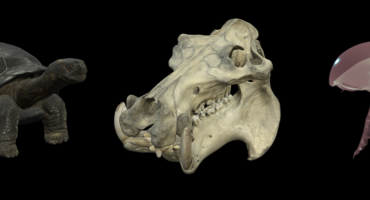About
The Astronomical Observatory of Palermo (OAPA) “Giuseppe S. Vaiana” is one of the research centers of the National Institute for Astrophysics (INAF) in Italy. It collaborates with the University of Palermo (UNIPA) through the Department of Physics and Chemistry (DIFC). The main characteristic of OAPA is its specific vocation in the field of space astrophysics. The network of activities also involves various frontier research fields both at the national and international level.
The computational fluid dynamics team at OAPA brings together researchers from the INAF/OAPA and the UNIPA/DIFC to carry out theoretical and numerical studies in various fields of astrophysics. These include both the development of new numerical codes and modules based on the physics which describes the motion of fluids (hydrodynamics – HD) or of electrically conducting fluids (such as the plasma) in the presence of magnetic field (magnetohydrodynamics – MHD) and the application of existing simulation tools and software packages.
Computational Fluid Dynamics and Astrophysical Phenomena
The OAPA team is committed to high performance computing (HPC) programs aimed at developing plasma models in astrophysical environments. Over the years, our team has acquired a solid experience and the necessary skills to optimize HD/MHD codes for efficient execution on high-performance parallel computing systems and to develop and apply numerical models to the study of astrophysical plasma, like the one present in the solar and stellar coronae, in young stellar objects, in novae, and in supernova remnants.
 3D MHD model describing a protostar surrounded by a circumstellar disk. The cutaway view of the star-disk system shows the mass density (blue) and sampled magnetic field lines. A 3D volume rendering of the plasma temperature is over-plotted in log scale and shows a hot corona (red-yellow) linking the inner part of the disk with the central protostar. Credits: INAF-Osservatorio Astronomico di Palermo.
3D MHD model describing a protostar surrounded by a circumstellar disk. The cutaway view of the star-disk system shows the mass density (blue) and sampled magnetic field lines. A 3D volume rendering of the plasma temperature is over-plotted in log scale and shows a hot corona (red-yellow) linking the inner part of the disk with the central protostar. Credits: INAF-Osservatorio Astronomico di Palermo.Among other things, our team takes part in the development and optimization of multidimensional HD/MHD numerical codes, which are developed using the C and/or Fortran programming languages and designed to make efficient use of massively parallel computers using Message Passing Interface (MPI) library for interprocessor communication. The codes are optimized to reduce the computational cost and to improve the parallel efficiency when using several thousands of processors. Typical 3D HD/MHD simulations are executed using of the order of 10 thousands CPUs on parallel supercomputers and require millions of computer hours for the whole computation. The code development includes also the accurate description of physical effects relevant in astrophysics, such as thermal conduction, gravity, viscosity, radiative losses from optically thin plasma, deviations from ionization equilibrium, etc. The team also has extensive experience analyzing and interpreting the results of the models in terms of observable quantities and has excellent experience analyzing and interpreting multi-wavelength data through comparison with model results.
The team extensively applies FLASH, a publicly available high performance MHD code for computational physics developed at the Flash Centre of the University of Chicago (USA), and PLUTO, a modular Godunov-type MHD code for astrophysical plasmas developed at the Physics Department, Turin University (Italy) in a joint collaboration with INAF – Astronomical Observatory of Turin (Italy) and the SCAI Department of CINECA (Italy).
 The model describes a hot magnetic loop, the building block of solar and stellar coronae. The loop is rooted in the chromosphere (in light blue) and is composed of several fibrils hosting plasma at temperatures of a few millions degrees (in red-yellow). The lines are sample magnetic field lines. Credits: INAF-Osservatorio Astronomico di Palermo.
The model describes a hot magnetic loop, the building block of solar and stellar coronae. The loop is rooted in the chromosphere (in light blue) and is composed of several fibrils hosting plasma at temperatures of a few millions degrees (in red-yellow). The lines are sample magnetic field lines. Credits: INAF-Osservatorio Astronomico di Palermo.The team is involved in the following main research lines:
- Dynamics of magnetic structures of the solar and stellar coronae;
- Physics of star-planet interaction;
- Physics of accretion phenomena in young stellar objects;
- Evolution of protostellar jets and origin of their X-ray emission;
- Evolution of nova outbursts;
- Evolution from supernova explosions to full-fledged supernova remnants;
- Interaction of supernova remnants with the surrounding environment;
- Effects of cosmic ray particle acceleration on the evolution of supernova remnants.
 The model represents a supernova remnant, the outcome of a catastrophic supernova explosion, typically occurring at the end life of massive stars. The violet surface tracks the stellar debris ejected after the explosion. The lines are sampled magnetic field lines. The 3D volume rendering describes the regions where cosmic rays are efficiently accelerated (red-yellow-green regions). Credits: INAF-Osservatorio Astronomico di Palermo.
The model represents a supernova remnant, the outcome of a catastrophic supernova explosion, typically occurring at the end life of massive stars. The violet surface tracks the stellar debris ejected after the explosion. The lines are sampled magnetic field lines. The 3D volume rendering describes the regions where cosmic rays are efficiently accelerated (red-yellow-green regions). Credits: INAF-Osservatorio Astronomico di Palermo.The HPC facilities used to perform our simulations are:
- Sistema di Calcolo per l’Astrofisica Numerica (SCAN, INAF-OAPA; Palermo, Italy)
- Consorzio Interuniversitario del Nord-Est per il Calcolo Automatico (CINECA, Bologna, Italy)
- Barcelona Supercomputing Center (BSC, Barcelona, Spain)
- Centre Informatique National de l’Enseignement Supérieur (CINES, Montpellier, France)
The 3DMAP-VR project
Fully 3D MHD simulations of astrophysical phenomena represent a challenge in standard data visualization for scientific purposes, for the amount of processed data and the wealth of scientific information they contain. However, virtual reality (VR) hardware and software are now commonly used in different fields for public outreach and education with excellent feedback. To this end, YouTube and online multimedia digital stores have several high-impact VR titles in the Astrophysics and Space Science categories of their catalogs. The routine, scientific use of VR environments, however, is still in its infancy.
In the first half of 2019, we launched 3DMAP-VR (3-Dimensional Modeling of Astrophysical Phenomena in Virtual Reality), a tool for visualizing 3D MHD models of astrophysical simulations, using VR equipment. The workflow combines: 1) accurate 3D HD/MHD simulations performed for scientific purposes using the FLASH code or the PLUTO code in HPC facilities, 2) the Paraview software (developed by Kitware Inc and distributed under a permissive BSD license) to realize the scenes and quickly have a VR representation of the model. The tool is used to analyze the numerical results in an immersive fashion, integrating the traditional screen displays. The models account for all the relevant physical processes in astrophysical phenomena: gravity, magnetic-field-oriented thermal conduction, energy losses due to radiation, gas viscosity, deviations from proton-electron temperature equilibration, deviations from the ionization equilibrium, cosmic rays acceleration, etc. The 3D representations of the models are realized using a mixed technique consisting of multilayer isodensity surfaces with different opacities. We are at the beginning of the project, but the first results in terms of feedback during public outreach events were excellent.
Why Sketchfab
Only recently we became aware of Sketchfab and immediately recognized its enormous potential for dissemination and communication activities. We started testing Sketchfab by uploading some of our models and sending the corresponding links to colleagues and interested people to get their opinion on the representation of the models and on the impact of the VR experience. Feedback has been enthusiastic and this has encouraged us to improve our models on Sketchfab and to expand the number of models available through the platform. We now expect excellent synergy between our 3DMAP-VR project and Sketchfab to promote a wide dissemination of results for both scientific and public outreach purposes. To this end, we started a Sketchfab collection, “Universe in hands“, which gathers different models of astrophysical objects and phenomena developed by our team for scientific purposes and published in international scientific journals and magazines.
As an example of a model from this collection, the following describes the structure of Cassiopeia A, the outcome of the catastrophic explosion (a supernova) of a massive star at the end of its life about 340 years ago. The model shows the highly inhomogeneous distribution of stellar debris after the explosion; the different colors mark different chemical elements. The study of the structure of supernova remnants is fundamental in astrophysics because the remnants encode crucial information about the physical processes associated with the supernova engine.
Another example is the following model which describes the aftermath of a nova, a thermonuclear explosion occurring on the surface of a white dwarf star that is accumulating material from a companion red supergiant. The model shows the blast wave that expands through the inhomogeneous circumstellar medium 17 days after the explosion and the distribution of the ejected material, expanding with supersonic velocity after the explosion. These studies are important because the material ejected after the explosion gives us the unique opportunity to investigate the chemical composition of the outermost layers of the white dwarf, and the interaction of the blast wave with the surrounding medium allows us to explore the structure and density distribution of the circumstellar medium. All these pieces of information concur to unveil the latest stages of stellar evolution.
The example below shows a low-mass infant star during the phase of accretion of mass. The protostar (at the center of the scene) is analogous to our star, the Sun, when it was formed about 5 billion years ago. The protostar is surrounded by a circumstellar disk from which the star accretes matter. An intense activity due to sudden releases of energy (flares) near the disk gradually forms an extended hot corona (temperature of several million degrees) above the disk that emits in the X-ray band. The flares perturb the disk and trigger the accretion of mass onto the protostar. These studies are important to investigate how star systems similar to our solar system form and, therefore, to unravel the physical conditions that could lead to the formation of habitable planets and, ultimately, of life.




